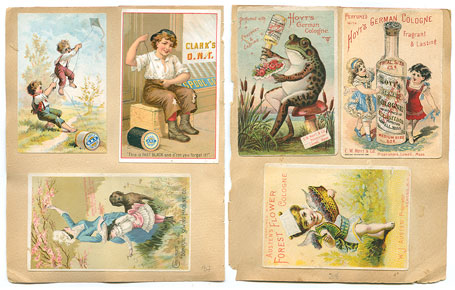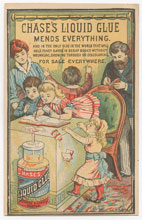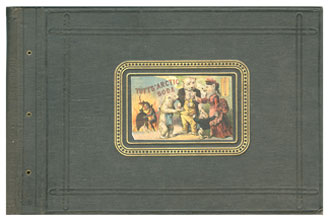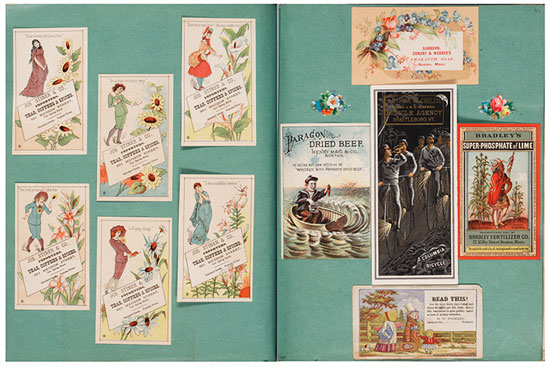The Art of American Advertising:
Scrapbooks & Collectibles
“The number of people who save handsome advertising cards when they get a chance to get them is larger now than ever. . . . The ultimate destination of all cards is to swell some collection or to adorn some home.”The Paper World, May 188528
By the 1880s, the popularity of the coveted, mass-produced trade cards and souvenir materials inspired a mania for collecting. “In a culture not yet saturated with manufactured images,” historian Pamela Laird asserts, “this accessibility evoked widespread excitement and acquisitiveness, and particularly when pictures were free because they carried advertisements.”29
Customers collected trade cards and novelty items, decorated their kitchens with them, traded them with one another, and sometimes accorded the pieces a special status by pasting them into scrapbooks. Assembling scrapbooks—whether for stamps, coins, or newspaper clippings—had developed into a favorite nineteenth-century pastime and spawned its own industry. Collectors could refer to how-to books on the art of scrapbook making, use manufactured scrapbook supplies, and chose from a variety of albums ranging from those with simple covers to those with tooled embossed leather and elaborate designs.
The collecting of advertising media especially appealed to women and children, who created artful arrangements of cards and souvenir items on album pages, often organizing them by brand name, product, design, or subject theme. Advertisers encouraged repeated purchases by capitalizing on the desire of customers to collect a complete series. Coffee, tea, and tobacco companies, for example, produced groups of trade cards with specific themes such as flowers or events in American history. One collector remembered, “as a school—boy I canvassed back doors urging housewives to buy Arbuckle’s Coffee so that I could collect the travel and history cards. . . . I had the first complete set of Arbuckle’s Coffee cards and as a collector of these advertisements became the envy of the schoolyard.”30
Scrapbooks filled with colorful trade cards, business cards, postcards, and the like offered a unifying structure in which to display an abundance of recognized brand name goods, while introducing a new culture of advertising into the home. “Framing the cards within [scrapbooks] became another way for the cards to move into the national culture, and in which the national culture was replicated in each home,” Garvey explains.”31
28 The Paper World10 (May 1885), in Garvey, p. 23.
29 Laird, p. 62.
30 Chalmers Lowell Pancoast, Trailblazers of Advertising: Stories of the Romance and Adventure of the Old Time Advertising Game. New York: Frederick H. Hitchcock, 1926 p. 53 in Garvey, p. 28.
31 Garvey, p. 49.



